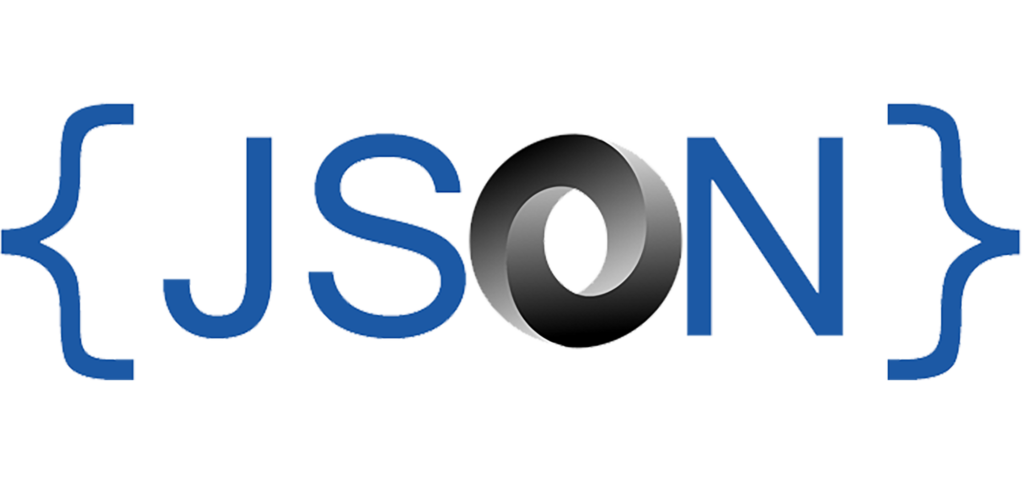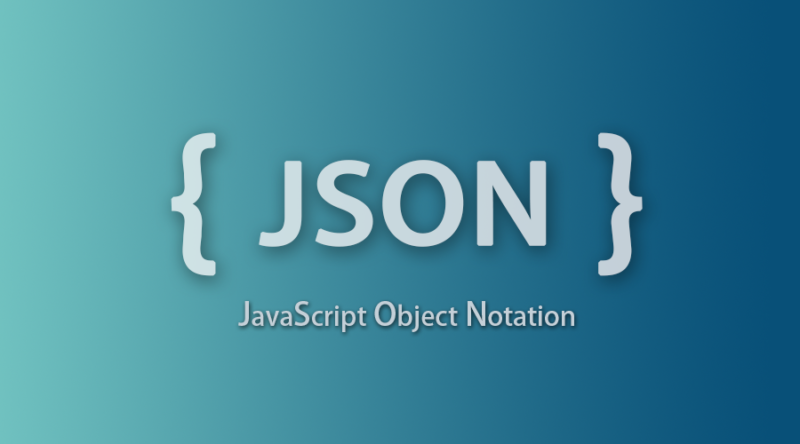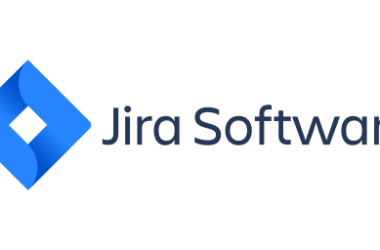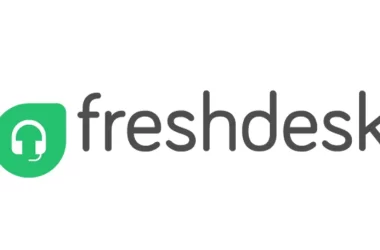In the ever-evolving world of data serialization, JSON (JavaScript Object Notation) has been a stalwart for encoding structured data. However, as the demands of modern applications grow, developers often find themselves seeking alternatives that offer enhanced performance, efficiency, or simply a more tailored approach to their specific needs. In this comprehensive guide, we will delve into JSON and explore nine robust JSON alternatives, shedding light on their features, limitations, and use cases. Let’s discover the JSON alternatives that can elevate your data serialization game.
Unveiling JSON: Features and Limitations

Features of JSON
JSON, known for its simplicity and ease of use, boasts a set of notable features:
- Human-Readable: JSON’s plain text format is easy for both humans and machines to read and write. This readability ensures that developers can quickly understand the structure of the data, making debugging and data exchange a breeze.
- Platform-Agnostic: It is language-independent, making it an ideal choice for data exchange in heterogeneous environments. Whether you’re working with Python, JavaScript, or any other programming language, JSON serves as a universal language for data interchange.
- Lightweight: JSON’s minimalistic design minimizes data transfer and storage overhead. This lightweight quality is particularly beneficial for web applications, where efficient data exchange is crucial.
- Extensible: It supports a wide range of data types and structures, allowing for complex data representations. Whether you’re dealing with integers, strings, arrays, or nested objects, JSON can handle it all with ease.
- Wide Adoption: JSON is widely supported in programming languages, making it a de facto standard for web APIs. This extensive adoption ensures compatibility and smooth data exchange across various ecosystems.
Limitations of JSON
While JSON has numerous advantages, it also comes with some limitations:
- Lack of Efficiency: JSON’s verbose text-based format can lead to increased data transfer and storage costs. When dealing with large datasets or limited bandwidth, the extra bytes in a JSON payload can be a significant drawback.
- Data Type Limitations: It struggles to represent binary data efficiently, unlike some other serialization formats. If your application relies heavily on binary data, you might find JSON’s support lacking.
- No Comments: JSON lacks support for comments, which can be invaluable in documenting data structures. The absence of comments can make it challenging to clarify the purpose and structure of specific data elements.
- Schemaless: The lack of a strict schema can lead to potential data validation and security issues. Without a predefined structure, it becomes the responsibility of the developer to ensure data integrity, which can be error-prone.
- Limited Metadata: JSON doesn’t provide built-in support for metadata, making it less suitable for some use cases. In scenarios where you need to attach additional information to your data, you might find JSON’s capabilities limited.
Why Look for JSON Alternatives?

While JSON has been a staple in the developer’s toolbox, specific use cases and evolving requirements have driven the need for JSON alternatives. Let’s delve into some of the key reasons why developers explore JSON alternatives:
1. Enhanced Efficiency
In scenarios where bandwidth or storage is a concern, more efficient formats can be a game-changer. JSON’s text-based nature can be overly verbose for data-intensive applications, leading developers to seek JSON alternatives that offer compact binary representations.
Efficiency is a paramount concern when it comes to data serialization. For instance, in IoT applications where data transfer occurs over limited bandwidth, every byte saved counts. This is where JSON alternatives like MessagePack and CBOR shine. Their binary encoding reduces the payload size significantly, making them ideal choices for resource-constrained environments.
2. Specialized Use Cases
Some applications require more than just plain data serialization. When complex metadata, schema enforcement, or binary data support are vital, JSON alternatives tailored to these needs become essential. For example, in scientific data analysis, where datasets can be incredibly complex and require extensive metadata, formats like HDF5 or NetCDF are favored for their specialized capabilities.
3. Performance Optimization
In high-performance systems where every millisecond counts, JSON alternatives with optimized serialization and deserialization processes can significantly boost efficiency and responsiveness. Consider financial applications where millisecond delays in processing transactions can result in significant financial losses. Formats like Protocol Buffers, designed for high-performance systems and network communication, are preferred in such demanding scenarios.
4. Compatibility with Specific Technologies
In some cases, the choice of a JSON alternative may depend on its compatibility with existing technologies or platforms. Ensuring a seamless integration with existing systems is crucial. For instance, in the world of big data processing, Apache Avro is favored for its close association with the Apache Hadoop ecosystem. This compatibility ensures a smooth data flow and processing within the Hadoop framework.
Commonly Used JSON Alternatives For Diverse Needs

In the realm of data serialization, a variety of alternatives to JSON exist, each offering unique strengths and capabilities. With these compelling reasons in mind, let’s explore some of the most popular JSON alternatives available today.
1. XML (eXtensible Markup Language)
XML remains a robust choice when intricate hierarchical data structures are required. Its wide usage in web services and document storage showcases its relevance in contexts where document-like data is prevalent.
Features
- XML offers a hierarchical structure for data representation. This hierarchical structure is ideal for representing documents and data that have a natural tree-like structure.
- It supports complex data types and schema definitions. This is particularly advantageous when data validation and strict schemas are required.
- Widely used in web services and document storage. XML’s broad adoption, especially in web services and document storage, makes it a well-established choice.
Limitations
- XML’s verbose nature makes it less space-efficient than binary formats. While XML excels in representing complex data structures, it tends to be more verbose than binary JSON alternatives, resulting in larger data payloads.
- Parsing XML can be more resource-intensive than JSON. Due to its hierarchical nature and extensive support for various data types, parsing XML documents can be computationally more demanding.
2. YAML (YAML Ain’t Markup Language)
YAML’s simplicity and human-readable format make it a favorite for configuration files in scenarios where setting up software or defining application configurations is a common task.
Features
- YAML is human-readable and supports complex data structures. YAML’s human-readable format, with support for complex structures, makes it a favorite in the world of configuration files.
- It excels in configuration files due to its simplicity. Simplicity in defining configuration files is vital for quick and easy setup, and YAML delivers on this front.
- Commonly used in DevOps and software configuration. YAML has found a significant home in DevOps practices, where clear and concise configuration files are essential for automated deployment and orchestration.
Limitations
- YAML can be sensitive to formatting, making it error-prone. The strict reliance on indentation and formatting in YAML can introduce errors if not handled carefully.
- The lack of built-in data types might require additional validation. YAML’s lack of strict data types means that developers may need to implement additional validation logic to ensure data integrity.
3. TOML (Tom’s Obvious, Minimal Language)
TOML’s clarity and ease of use are its standout features, perfect for settings and configuration in projects where minimalism is valued.
Features
- TOML offers a minimalistic and easy-to-read format. TOML’s minimalism ensures that data is presented in a clear and concise manner.
- It excels in representing key-value pairs and configuration data. The straightforward nature of TOML makes it well-suited for key-value pairs and configuration data.
- Widely used in projects for settings and metadata. TOML’s applications extend to settings and metadata, where simplicity and clarity are paramount.
Limitations
- TOML’s simplicity might limit its applicability to more complex data structures. While TOML shines in straightforward data representation, it may not be the best choice for highly complex structures.
- It may lack the extensibility required for certain applications. In scenarios where extensibility through complex data structures is required, TOML may fall short.
4. MessagePack
MessagePack shines when performance and data size are paramount, such as in message queuing systems where rapid and efficient data transfer is a necessity.
Features
- MessagePack is a binary format with high efficiency. Its binary format reduces data size and processing time, making it highly efficient.
- It’s designed for compact data representation and quick parsing. MessagePack excels in scenarios where efficiency and speed are top priorities, reducing data transfer costs and enhancing application responsiveness.
- Commonly used in message queuing systems and data serialization. Its compact nature and efficiency make MessagePack a go-to choice for message queuing systems where rapid data exchange is essential.
Limitations
- MessagePack’s binary nature can be less human-readable. While it excels in efficiency, the binary nature of MessagePack may not be ideal for human inspection of data.
- It may not be the best choice for data interchange between different platforms. Due to its binary format, interoperability between platforms with different endianness or architecture can be challenging.
5. Protocol Buffers (ProtoBuf)
ProtoBuf excels in high-performance systems and communication, providing efficient data serialization that enhances system responsiveness.
Features
- Protocol Buffers offer a highly efficient binary format. Its binary format ensures efficient data storage and transfer.
- They support schema definitions and are language-agnostic. The support for schema definitions allows for data validation and ensures data integrity while being language-agnostic, making it versatile for various ecosystems.
- Commonly used in high-performance systems and network communication. In systems where high performance is crucial, such as online gaming servers or real-time financial data platforms, Protocol Buffers are the preferred choice.
Limitations
- ProtoBuf can be more complex to set up than JSON or other formats. Due to its efficiency and versatility, Protocol Buffers may require more initial setup and configuration.
- It may not be as human-readable as text-based formats like JSON. While Protocol Buffers excel in efficiency, their binary nature can be less human-readable, which can be a drawback in certain scenarios.
6. BSON (Binary JSON)
BSON is ideal for those working with MongoDB, offering efficiency in data storage and retrieval, which is critical in applications where large volumes of data need to be stored and retrieved with speed.
Features
- BSON is a binary-encoded format with a focus on efficiency. Its binary encoding minimizes data size and reduces storage costs.
- It’s commonly used in MongoDB for data storage and retrieval. BSON’s association with MongoDB makes it a preferred choice for those dealing with this popular NoSQL database.
- BSON offers support for complex data structures. While efficient, BSON doesn’t compromise the ability to represent complex data structures, making it suitable for a wide range of applications.
Limitations
- BSON’s binary format may not be as human-readable as JSON. While BSON optimizes for efficiency, the binary format can make it less intuitive for human inspection.
- It may not be as widely supported in various programming languages. BSON’s support might be limited in some ecosystems compared to JSON, which is universally accepted.
7. CBOR (Concise Binary Object Representation)
CBOR’s focus on compactness and efficiency makes it an excellent choice for constrained environments, ensuring optimal resource utilization.
Features
- CBOR is a binary format designed for small code size and fast parsing. Its design ensures efficient data transmission and minimal code size, which is beneficial in resource-constrained environments.
- It’s highly space-efficient and supports complex data types. Despite its compact nature, CBOR can handle complex data structures efficiently.
- Often used in constrained environments and resource-constrained systems. In scenarios where resources are limited, such as IoT devices or embedded systems, CBOR’s efficiency and compactness are advantageous.
Limitations
- CBOR’s binary format can be less human-readable. Given its focus on compactness, CBOR’s binary format may not be as straightforward for human inspection, which can be a drawback in some cases.
- Adoption in some programming languages may be limited. While CBOR is gaining traction, it may not be as widely supported as other formats like JSON or XML, depending on the programming languages used.
8. HJSON (Human JSON)
HJSON provides a balance between readability and functionality, making it an excellent choice for configuration files in scenarios where clarity and explanatory comments are essential.
Features
- HJSON offers a JSON-like format with additional readability. It combines the simplicity of JSON with the readability of comments and flexible formatting.
- It allows for comments and human-friendly configuration. The inclusion of comments and enhanced human-friendliness make HJSON a favorite for configuration files that require annotations and explanations.
- Commonly used in configuration files and data interchange. In projects where configuration files need to be human-readable and provide extra context, HJSON finds its niche.
Limitations
- HJSON’s additional features might not be universally supported. The extra features in HJSON, while valuable, may not be universally supported in all environments, potentially causing compatibility issues.
- It may not be the best choice for complex data serialization. In cases where complex data structures need to be serialized, HJSON’s simplicity may not suffice.
9. Avro
Avro shines in big data applications, offering efficiency and schema evolution support that is crucial in the processing and analysis of vast data volumes.
Features
- Avro is a binary data serialization system optimized for big data. Its binary format reduces data size, which is advantageous in big data applications where storage and transfer efficiency are critical.
- It supports schema evolution and efficient data representation. The ability to evolve schemas without breaking existing data and efficient data representation make Avro a staple in big data processing.
- Commonly used in the Apache Hadoop ecosystem. Avro’s seamless integration with Apache Hadoop ensures that it plays a pivotal role in the world of big data, offering compatibility and efficiency.
Limitations
- Avro’s binary nature may be less human-readable. While Avro optimizes for efficiency, its binary format might not be the best choice when human inspection of data is essential.
- Setup and integration can be more complex than simpler formats. Avro’s feature-rich capabilities may require more intricate setup and integration compared to simpler formats like JSON or XML.
Factors To Consider While Choosing The Perfect JSON Alternative

Selecting the ideal alternative to JSON is a critical decision for any project. To make this choice wisely, consider several factors that align with your project’s specific needs. By carefully weighing the following factors, you can confidently select the alternative that best serves your project’s goals.
1. Performance Requirements
Evaluate your application’s performance needs, such as data transfer speed and memory usage. Choose a JSON alternative that aligns with your performance goals. For example, if you’re developing a real-time gaming server, you’d prioritize a format like Protocol Buffers to ensure minimal latency and efficient data exchange.
2. Data Complexity
Consider the complexity of your data structures. If your application deals with hierarchical or complex data, formats like XML or ProtoBuf may be more suitable. In contrast, if your data is mostly configuration settings, a lightweight format like TOML or HJSON might suffice.
3. Compatibility
Ensure that the chosen JSON alternative is compatible with your existing technologies and platforms, reducing integration hassles. If your project is part of the Apache Hadoop ecosystem, Avro’s compatibility will streamline data processing.
4. Readability vs. Efficiency
Balance the need for human-readable data with efficiency requirements. Some applications may prioritize efficiency, while others require human-friendly configuration. The choice between MessagePack and HJSON, for instance, will depend on the need for efficiency versus human interpretability.
5. Schema Requirements
If your project demands strict data validation and schema enforcement, look for JSON alternatives with robust schema support. In scenarios where data integrity is critical, ProtoBuf’s support for schemas and strong typing is an advantage.
Conclusion
In the world of data serialization, the choice of the perfect format depends on your specific needs and goals. JSON, while a popular and versatile choice, isn’t always the best fit for every scenario. Explore the wide array of JSON alternatives we’ve discussed, from XML to Avro, and carefully assess their features, limitations, and compatibility with your project. By choosing the right JSON alternative, you can enhance your data serialization experience, improve efficiency, and meet the unique demands of your application.
Remember, the key to success is selecting the format that aligns with your project’s specific requirements, ensuring that data exchange, storage, and processing are as efficient and effective as possible. So, go ahead, choose your JSON alternative, and embark on a journey toward enhanced data serialization.









